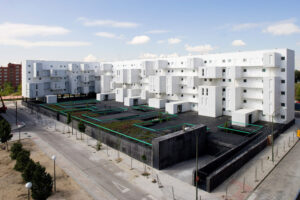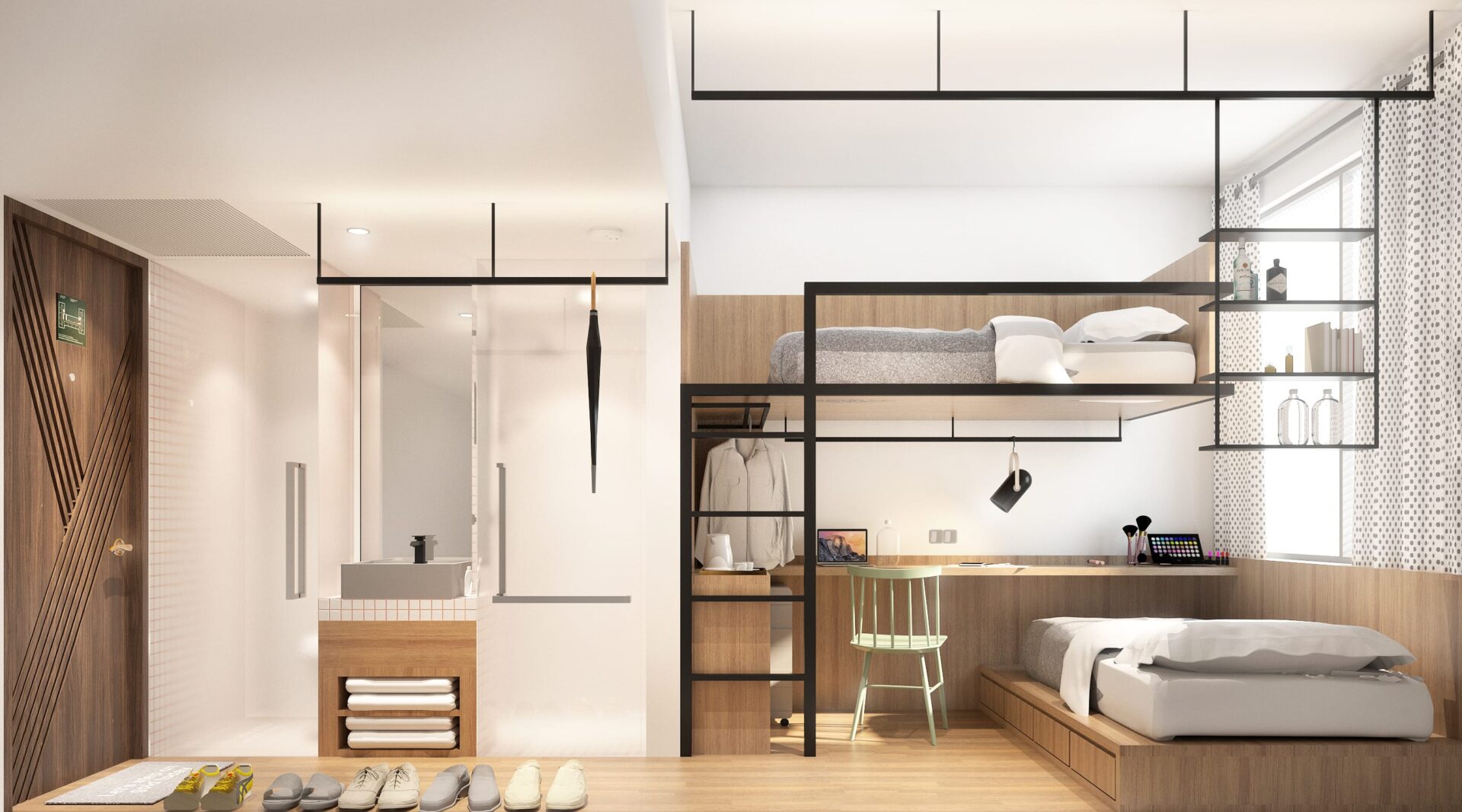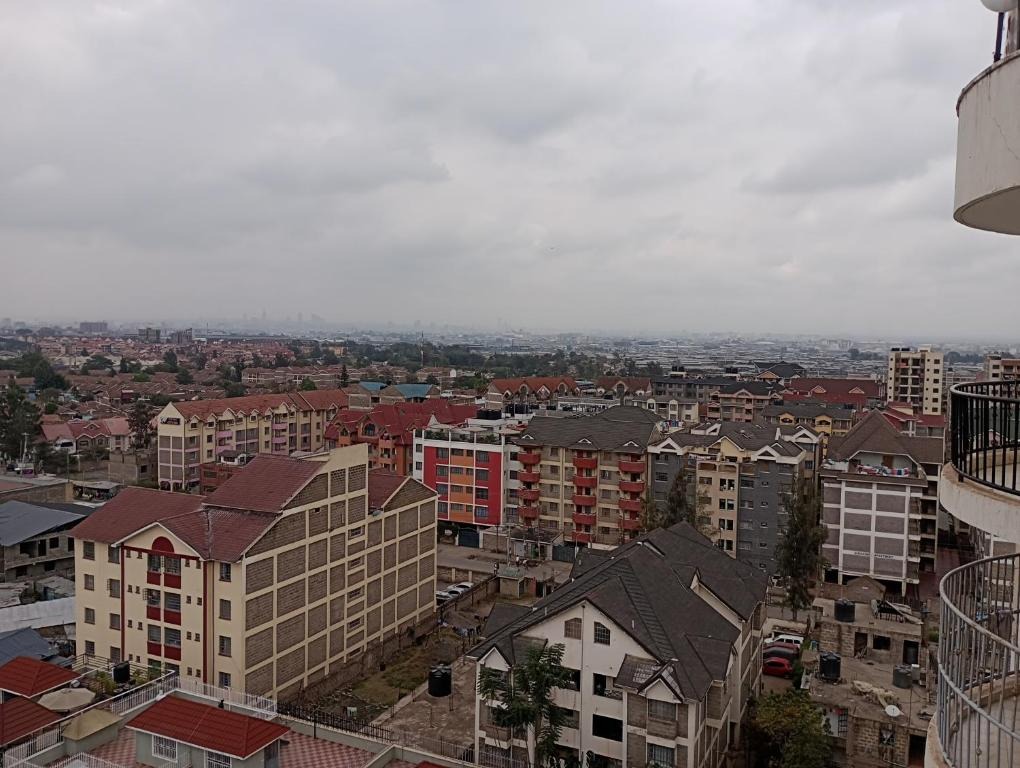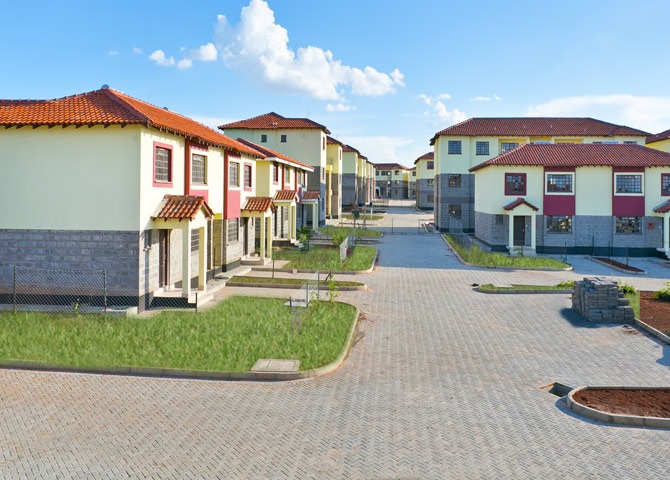
The housing market is witnessing a transformative shift with the rise of co-living spaces, a trend that responds to the changing dynamics of urban living. Co-living, characterized by shared living spaces and communal facilities, is becoming increasingly popular among young professionals, students, and digital nomads. This article explores the rise of co-living spaces, their appeal, and their implications for the housing market.
Redefining Urban Living

Co-living spaces are redefining urban living by offering a blend of private and shared amenities designed to foster community and convenience. Unlike traditional apartment rentals, co-living spaces emphasize flexibility, social interaction, and affordability. Residents typically have their own private bedrooms but share common areas such as kitchens, living rooms, and coworking spaces. This model is particularly appealing in densely populated cities where housing costs are high, and space is at a premium.
The Appeal of Co-Living

Several factors contribute to the growing appeal of co-living spaces. First, affordability is a significant draw. Co-living arrangements often include utilities, internet, and other services in a single monthly fee, making it easier for residents to manage their budgets. Additionally, the shared cost of living spaces allows for more affordable rent compared to traditional housing options.
Second, co-living spaces cater to the social needs of modern urban dwellers. In a world where people are increasingly mobile and often find themselves living away from family and friends, co-living offers a built-in community. Regular social events and communal areas facilitate interactions and friendships, combating the isolation that can accompany urban living.
Third, flexibility is a key selling point. Many co-living spaces offer short-term leases and easy move-in procedures, appealing to individuals who may not want to commit to long-term rental agreements. This flexibility is particularly attractive to digital nomads and young professionals who value mobility and adaptability in their living arrangements.
Innovative Designs and Amenities
The design and amenities of co-living spaces are tailored to the needs and preferences of their target demographics. Modern co-living spaces often feature sleek, contemporary designs with an emphasis on functionality and aesthetics. Common areas are designed to encourage interaction, with comfortable seating, communal dining tables, and versatile coworking spaces.
Amenities in co-living spaces extend beyond basic needs, often including fitness centers, rooftop gardens, and even concierge services. Some co-living companies partner with local businesses to offer exclusive perks such as discounts at nearby cafes or memberships to local gyms. These added benefits enhance the living experience and make co-living an attractive option for urban residents.
Impact on the Housing Market
The rise of co-living spaces is reshaping the housing market in several ways. One significant impact is the increased competition for traditional rental properties. As more people opt for co-living arrangements, landlords and property developers are prompted to rethink their offerings. This shift may lead to improvements in traditional rental housing, such as enhanced amenities and more flexible lease terms, to compete with the co-living model.
Furthermore, the demand for co-living spaces has led to innovative real estate developments. Developers are increasingly investing in properties specifically designed for co-living, incorporating shared spaces and amenities from the ground up. This trend is particularly evident in major cities like New York, London, and Berlin, where housing demand is high, and space is limited.
Co-living also influences urban planning and development strategies. City planners and policymakers are recognizing the potential of co-living to address housing shortages and promote more efficient land use. By encouraging higher-density living arrangements, co-living can help mitigate urban sprawl and reduce the environmental footprint of housing.
Challenges and Considerations
Despite its benefits, co-living is not without challenges. Privacy concerns are a common issue, as residents must balance their desire for community with the need for personal space. Additionally, the transient nature of co-living can make it difficult to establish long-term relationships and a stable community.
Regulatory challenges also arise as co-living spaces grow in popularity. Zoning laws and housing regulations in many cities are not always equipped to handle the unique aspects of co-living arrangements. Policymakers must adapt to ensure that co-living developments comply with local regulations while addressing the needs of their residents.
Conclusion

The rise of co-living spaces represents a significant shift in the housing market, driven by changing lifestyles and the need for more flexible, affordable, and community-oriented living arrangements. As co-living continues to grow in popularity, it will likely spur innovation in real estate development and urban planning, offering new solutions to the challenges of modern urban living. By understanding and embracing this trend, developers, landlords, and policymakers can better meet the evolving needs of urban residents, creating vibrant, connected communities that enhance the quality of life for all.







